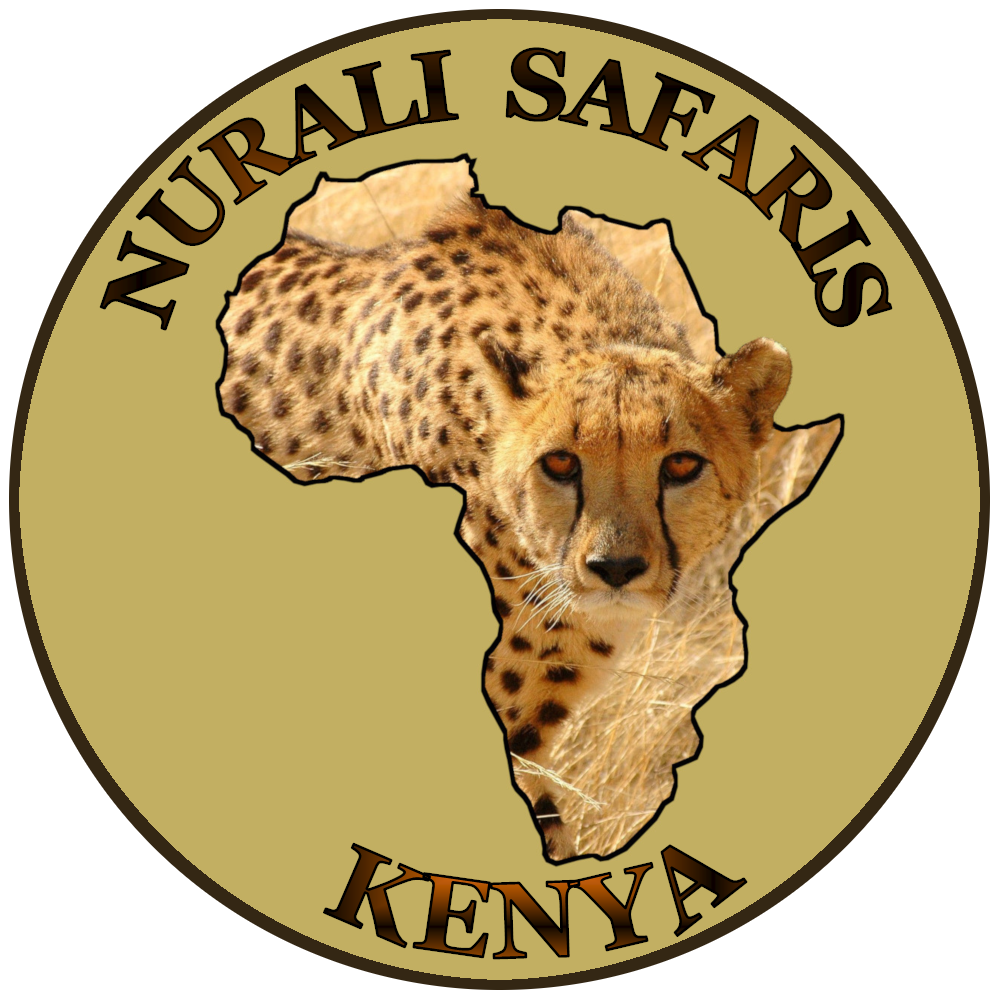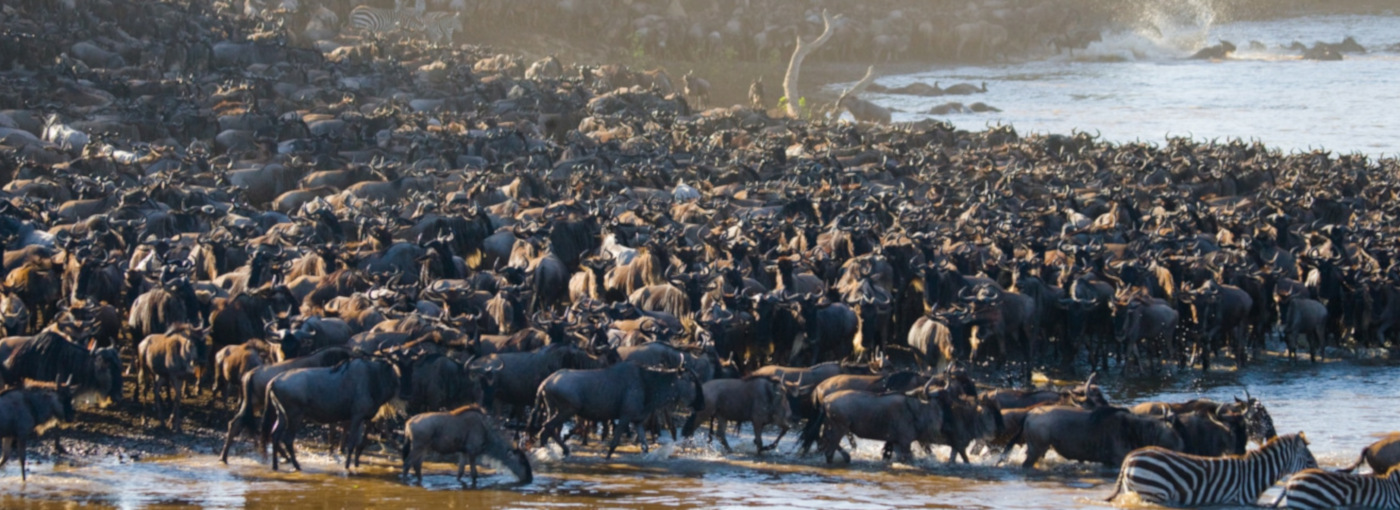La Grande Migrazione degli Gnu
Uno spettacolo di vita e di morte, una dura lotta per la sopravvivenza, un epico viaggio che si rinnova ogni anno: il fenomeno migratorio più imponente del pianeta Terra.
Uno spettacolo senza eguali si ripete ogni anno in un angolo di Terra tra il Kenya e la Tanzania. Senza dubbio è il più imponente spostamento di massa che avvenga ogni anno nel mondo naturale.
Stiamo parlando della migrazione degli gnu (e, insieme ad essi, di una nutrita schiera di ungulati) dal Parco Nazionale del Serengeti, in Tanzania, alla riserva di Maasai Mara, in Kenya. Un “trasloco” di gruppo in cerca di pascoli più verdi in cui rifocillarsi, che coinvolge oltre un milione e 600 mila esemplari, inseguiti da un vasto corollario di predatori.
Una lunga marcia in cerca di verdi pascoli
MA COSA GOVERNA IL MOVIMENTO SINCRONO DI COSI’ TANTI ANIMALI?
I fattori che con ogni probabilità influiscono sui pattern migratori degli gnu e di altre creature della savana sono l’abbondanza di cibo ed acqua; in particolare, la disponibilità di erba fresca in un suolo ricco di fosforo, elemento essenziale per le femmine di questa specie, soprattutto nel periodo dell’allattamento.
I tempi delle migrazioni variano considerevolmente di anno in anno. In generale, alla fine della stagione delle piogge (che in Africa Orientale cade tra maggio e giugno) gli gnu del Serengeti migrano verso nord, in cerca di pascoli più verdi e acqua da bere.
Quando, alcuni mesi più tardi (tra ottobre e novembre) le piogge ritornano, gli animali ritornano a sud, da dove erano partiti.
Vi rimangono fino a febbraio-marzo, periodo della nascita dei cuccioli, per poi ricominciare a spostarsi verso nord alla fine di aprile. Un cerchio infinito che inizia con la nascita dell’animale e si chiude solo con la morte.
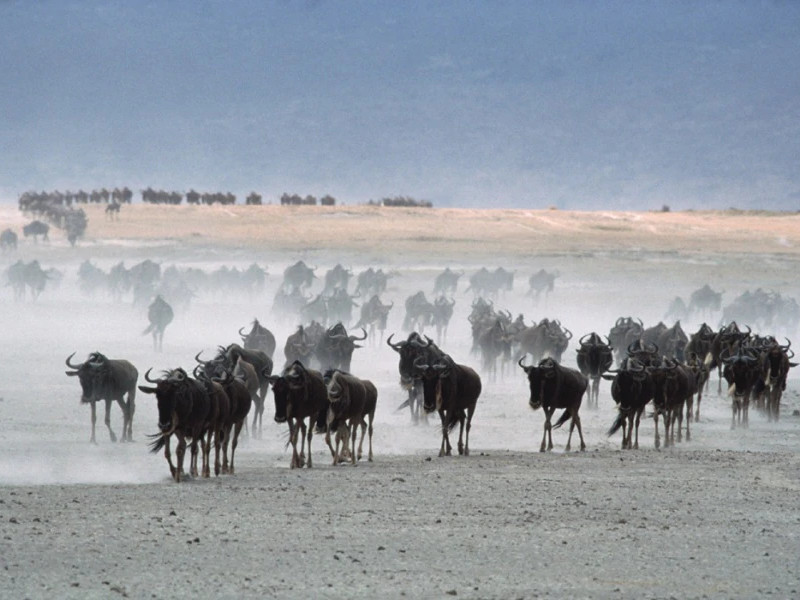

emozioni senza eguali
Il cerchio della vita: la Migrazione degli gnu
LA GRANDE MIGRAZIONE E’ UN MOVIMENTO CONTINUO DI GRANDI QUANTITA’ DI GNU ACCOMPAGNATI DA UN GRAN NUMERO DI ZEBRE
Lo spostamento di gruppo è una consolidata tecnica anti-predatore: muovendosi in massa, gli gnu minimizzano le probabilità di finire tra le grinfie di leoni, iene, ghepardi e coccodrilli, un po’ come fanno i pesci che si spostano in banchi.
Anche partorire nello stesso periodo dell’anno risponde alla stessa esigenza. Con così tanti cuccioli a disposizione, infatti, sarà più improbabile che i nemici acciuffino il proprio.
Per lo stesso motivo, gli gnu non si spostano da soli, ma accompagnati da circa 200 mila zebre, e 400 mila tra gazzelle e impala. Alcuni studi scientifici hanno dimostrato che questi ungulati sanno percepire anche i richiami di allarme di altre specie animali (come, per esempio, quelli dei babbuini) e sfruttarli per mettersi a loro volta in salvo.
Il sovrannumero non è l’unica arma che gli gnu del Serengeti hanno a disposizione. Possono contare anche su una notevole velocità (fino a 80 km orari), robuste corna e astute forme di cooperazione, come turni alternati di guardia notturna per vegliare sul resto della mandria.
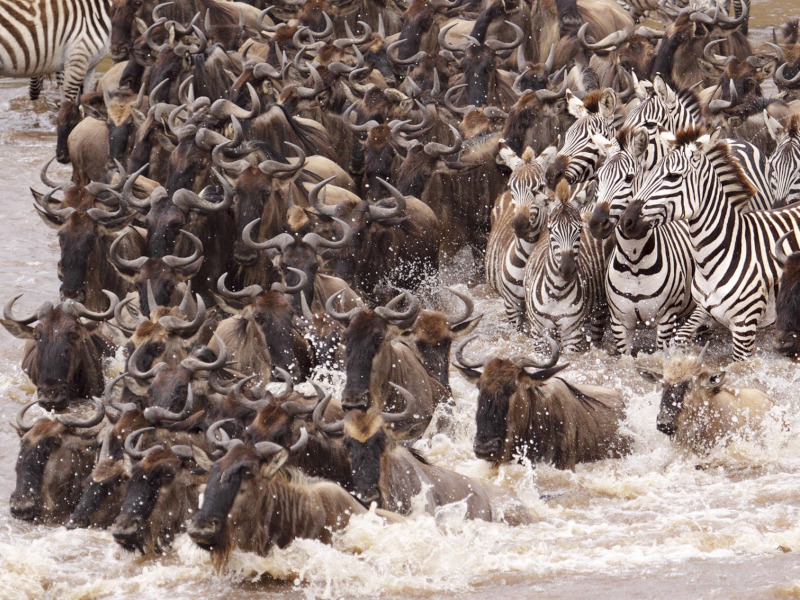
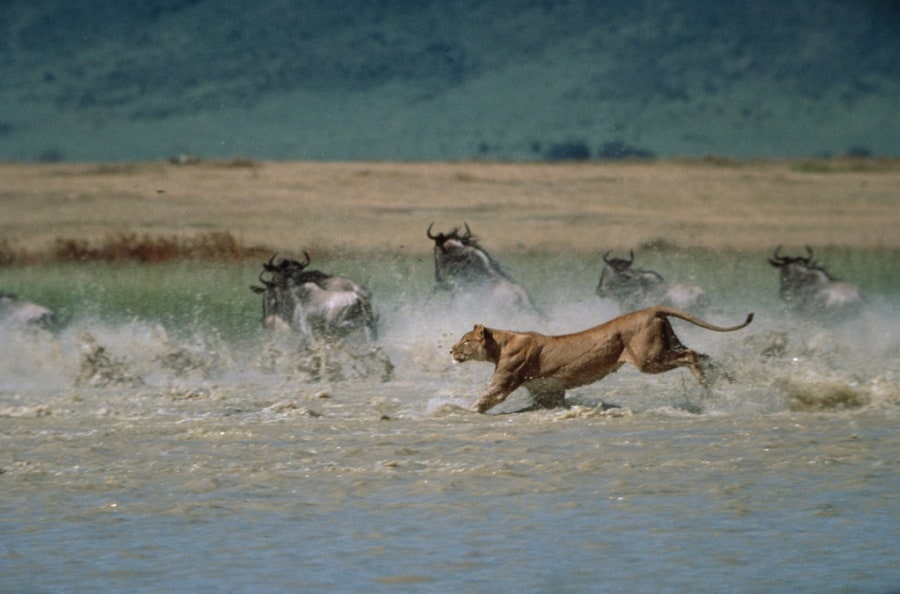
L'epica traversata degli gnu
"La migrazione degli gnu è un evento straordinario che segna il passaggio di milioni di animali attraverso la savana, alla ricerca di cibo e acqua"
Tutte queste risorse tornano utili nel momento più impegnativo del viaggio: l’attraversamento del fiume Mara, tra il Kenya e la Tanzania, infestato di coccodrilli che sfruttano l’occasione di un così folto numero di prede per fare incetta di carne.
I rettili acquattati nel fiume possono percepire la vibrazione dei milioni di zoccoli sul terreno ben prima che gli ungulati giungano al corso d’acqua. In genere, prima di tuffarsi le mandrie si riuniscono sulle rive, e i capibranco vengono sospinti in avanscoperta, costretti cioè a buttarsi tra le acque impetuose del fiume.
Uno degli imperativi fondamentali per queste mandrie è tenere i cuccioli all’interno del gruppo proteggendoli con la propria stazza. Si calcola che ogni anno nel Serengeti, tra febbraio e marzo, nascano circa 500 mila nuovi gnu: dopo 45 minuti dalla nascita, i piccoli sono già in grado di correre alla stessa velocità dei genitori.
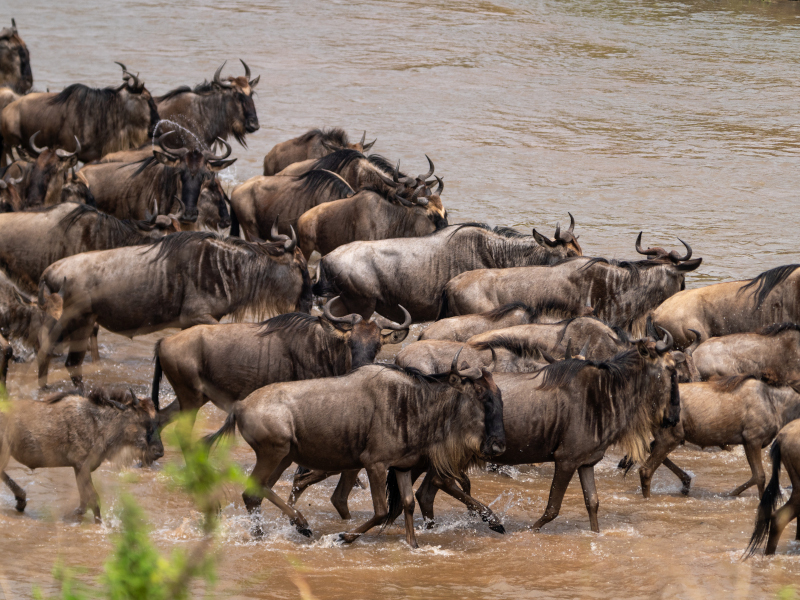
la migrazione vista dall'alto
Un viaggio tra la vita e la sopravvivenza
In un percorso migratorio annuale, un esemplare può arrivare a coprire anche 3 mila km di viaggio. La colonna di animali in migrazione può essere lunga anche 40 km.
Non è difficile immaginare il motivo che rende i movimenti migratori degli gnu così frequenti: la capacità di consumo di cibo di oltre un milione di erbivori mette infatti a dura prova i ritmi di ricrescita dell’erba. In altre parole, quando un pascolo è in esaurimento, occorre dargli il tempo di germogliare di nuovo.
Le necessità alimentari degli gnu e il loro calpestio giocano un ruolo fondamentale nel mantenimento degli ecosistemi della savana: la crescita dell’erba viene incoraggiata dal loro consumo (e dal loro letame, che funge da fertilizzante), e anche la parte superiore della catena alimentare, costituita dai predatori, beneficia del loro passaggio.
Uno dei fatti più affascinanti di questa migrazione? Le rotte possono variare di anno in anno così come i tempi: il movimento delle mandrie si ripete con eterna ciclicità eppure in modo diverso ogni anno.
un epico viaggio
Contatti
Contattaci per pianificare il safari dei tuoi sogni e vivere un'avventura indimenticabile in Kenya.
NURALI SAFARIS LTD
P.O. Box 5882
Malindi – Kenya
